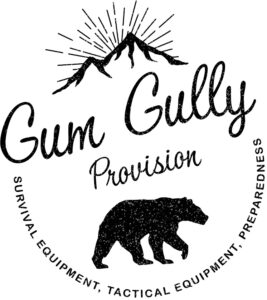A successful turkey hunt requires preparation, patience, and, most importantly, the right ammunition. While every hunter dreams of the perfect shot, achieving it starts with understanding the details of your ammo—what makes certain rounds more effective, how to choose the right shell size, and what considerations come into play when targeting these wily birds.
Whether you’re new to turkey hunting or a seasoned hunter looking to refine your approach, this guide will arm you with everything you need to know about turkey hunting ammunition. We’ll explore shell types, materials, shot sizes, and some tips for improving your hunting game.
Why Choosing the Right Ammunition Matters
Turkeys are challenging prey. Their sharp eyesight, quick reflexes, and dense feathering make them notoriously tricky to hunt. The right ammunition can mean the difference between a clean shot or spooking the bird. It affects your range, pattern density, and power—all essential for a humane, accurate hunt.
When you’re choosing ammunition, you’re not just looking for effective stopping power. It’s also about ensuring a controlled spread that targets the head and neck. After all, clean and ethical kills are the hallmark of responsible hunters.
Beyond ethical considerations, your ammunition also plays a role in ensuring you comply with hunting regulations which vary by location. Certain states or regions may enforce restrictions on the type of materials used in ammo—like prohibiting lead in certain areas—so knowing your options is crucial.
Types of Turkey Hunting Ammunition
When it comes to turkey hunting ammo, choosing between material types, gauges, and shell lengths is essential. Let’s break them down step-by-step:
1. Gauge
One of the first considerations is your shotgun’s gauge. The “gauge” defines the bore size of a shotgun and its corresponding shell’s dimensions. For turkey hunters, the most common gauges are:
- 12-Gauge: Known for its versatility and power, it’s the most widely used gauge for turkey hunting. It delivers an excellent balance of payload and range and works especially well with larger pellet sizes for increased stopping power.
- 20-Gauge: A lighter alternative, the 20-gauge is growing in popularity among hunters seeking reduced recoil. While the 20-gauge has less range and payload compared to the 12-gauge, modern ammunition advancements make it highly effective for turkey hunting.
- 10-Gauge (Less Common): More powerful with a significantly heavier payload, the 10-gauge has fallen out of favor due to its weight and recoil. However, for long-range hunting, it still finds its advocates.
Your choice of gauge depends on personal preference, comfort level, and the shotgun you own. Always make sure your ammunition matches your shotgun’s specifications.
2. Shot Materials
The material of the pellets—or “shot”—plays a critical role in performance and compliance with hunting regulations. The most common materials for turkey hunting are:
- Lead: Traditional and effective, lead provides excellent density and downrange performance. It’s affordable and accessible, making it a favorite among many hunters. However, in areas with strict environmental regulations, lead may be prohibited.
- Hevi-Shot & Tungsten (High-Density Alloys): Advanced non-toxic alternatives offering greater density than lead. These materials allow for smaller shot sizes that still pack a powerful punch. While pricier, these shells deliver remarkable range and pattern density, making them worth the investment for serious hunters.
- Steel: A cheaper non-toxic option. While steel is often required in waterfowl hunting, it’s less favored for turkey hunting due to its lighter weight and reduced energy retention.
3. Shell Length
Shell lengths determine the amount of shot and powder the shell holds. Common turkey hunting lengths include 2¾ inches, 3 inches, and 3½ inches. Longer shells typically house more pellets, resulting in denser patterns at greater ranges:
- 3-Inch Shells: The gold standard for turkey hunting, offering a solid balance of shot density and manageable recoil.
- 3½-Inch Shells: Best for hunters seeking maximum range and power, though they come with a tradeoff of significant recoil.
4. Shot Sizes
Shot size refers to the diameter of each individual pellet within the shell. Smaller numbers indicate larger pellets. For turkey hunting, shot sizes range from #4 (larger and heavier) to #9 (smaller).
- #4 and #5: Ideal for their size and power, these are effective for longer ranges but may deliver fewer pellets in a pattern.
- #6 (Most Common): Balanced between range and pellet count, making it a versatile choice for most scenarios.
- #7 and #9 Tungsten (High-Density Only): These smaller particles are optimized for density and consistently deliver superior patterning, especially with premium ammunition.
5. Specialized Turkey Loads
Dedicated turkey hunters often turn to shells developed specifically for the sport. These specialized loads combine the ideal gauge, material, payload, and shot size for optimum performance. Premium brands like Winchester Long Beard XR, Federal Heavyweight TSS, and Remington Nitro Turkey are just a few industry leaders worth exploring.
Tips for Ammunition Selection and Use
Getting the right ammo isn’t enough—you also need to make sure it performs well in your specific shotgun. Here are some tips to optimize your hunting setup:
1. Pattern Your Ammo
Pattern your shotgun with different ammo brands and sizes. By shooting at a target from typical turkey hunting distances (e.g., 30-40 yards), you can see how the pellets spread and check if your shots consistently hit the intended area.
2. Consider a Turkey Choke
Using a specialized turkey choke constricts the spread of your pellets, enabling tighter patterns at longer ranges. This is especially effective when paired with high-performance ammunition.
3. Know Your Range
While premium ammo might boost your effective range, shooting turkeys at excessive distances increases the risk of wounding them rather than achieving clean kills. Aim for ethical distances within the capabilities of your chosen ammo.
4. Stay Updated on Regulations
Hunting regulations can vary widely. Some areas enforce bans on lead ammo, while others have limits on shot sizes or shell lengths. Be sure to check local laws before heading into the field.
Beyond the Basics: Caring for Your Ammo
Proper storage and handling of your turkey hunting ammunition can make or break your experience. Store shells in a cool, dry place to prevent corrosion and moisture damage. Always inspect ammunition for defects before heading out to ensure reliable performance.
Turkey Hunting Ammunition FAQs
How many shells should I carry while turkey hunting?
Carrying three to five shells is usually adequate for a day of turkey hunting. This allows room for additional shots in case of misfires or multiple opportunities.
Should I use magnum loads for turkey hunting?
Magnum loads aren’t always necessary but can provide an advantage with extra range and pattern density. However, they also come with increased recoil.
Can I use waterfowl ammunition for turkey hunting?
Technically, yes. But waterfowl ammo, often designed with steel shot, may lack the density and pattern optimization needed for turkeys.
Gear Up and Take Aim
Choosing the right turkey hunting ammunition is about balance—finding the perfect combination for your shotgun, hunting style, and budget. By understanding the nuances of gauges, materials, and shot sizes, you equip yourself for a successful, ethical, and rewarding hunt.
Armed with these insights, you’re ready to hit the field and experience the thrill of chasing gobblers. Don’t forget, the best ammo is the one that gives you confidence as you line up that perfect shot. Happy hunting!
Products:
12 Gauge Dragon’s Breath Shot Gun Ammunition
Videos:

